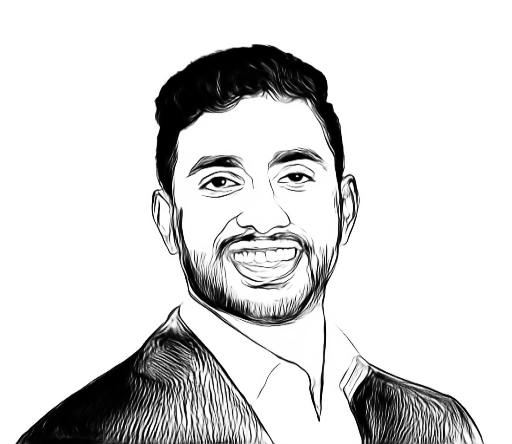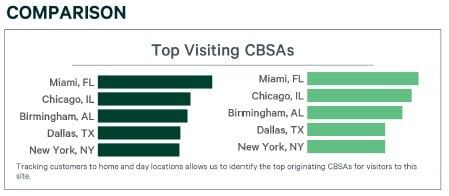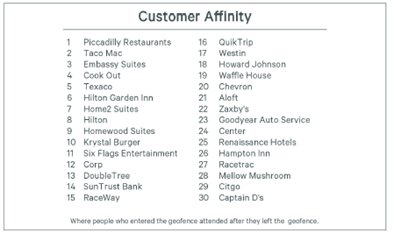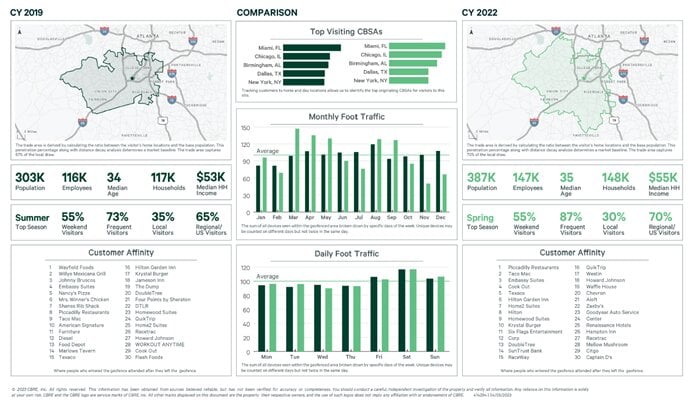Where did they come from? Where did they go? Mobile Data Insights could very well show


Synopsis
Advancements in location intelligence tools can help hoteliers better understand guest travel patterns and anticipate guest needs.
Last month, I was in a car with my father-in-law. We were backing out of the garage and down the driveway, a routine endeavor for suburban commuters. The vehicle had no rearview camera, which served as a shocking realization for a millennial who had grown accustomed to technology. I found this blind reversing maneuver to be a rather anxiety-inducing exercise. Thankfully, my father-in-law navigated safely to the road, and we went on our way.
Even small advancements in technology can have sweeping changes to our daily lives. In this article, we will explore how hotels can leverage location-based technology, such as tracking cellphone pings, to enhance guest experiences and streamline operations.
Cellphones – They ring, they ping, but they also do other things
The first handheld cellular phone call was made on April 3rd, 1973, and cellular technology has come quite a long way since then. There are approximately 298 million1 smartphone users in the United States as of 2021, and roughly 6.92 billion2 users globally as of 2023. Cellphones work by communication with cell towers, generating “pings” to mobile devices that can be used to track cellphone location, which is utilized to find lost phones, for emergency services, and more. Global Positioning Systems (GPS), on the other hand, use satellites to track the location of devices. Cellphone pings are not quite as reliable as GPS, but they can help hoteliers leverage data to better understand the travel patterns of their guests.
Real-Time Example & Application for Hoteliers
Our team is currently marketing a hotel on the southside of the airport in Atlanta, GA. We leveraged data from CBRE’s Location Intelligence team to understand visitor movement within the geofence (a virtual perimeter around a specific geographical area) of the hotel. Hotels can leverage this technology to better understand where guests are traveling to and from after arriving on property.
The chart below lists the top metro areas where guests traveled from in 2019 (left) and 2022 (right). From this data, a hotel operator could decide to increase direct marketing and advertising spend in these regions.

Hoteliers can also leverage mobile insights data to better understand guest interactions in the local community.
In 2022, the top destination for guests at the hotel was the Piccadilly Restaurant, a cafeteria-style restaurant serving Southern American cuisine. The restaurant is located 8.6 miles away from the hotel, about a 15-minute drive without the notorious Atlanta rush hour traffic. The hotel could use this information to collaborate with Piccadilly, potentially by incorporating elements of their menu into the hotel so that guests can enjoy local cuisine without leaving the comfort of the property. Additionally, the hotel could leverage joint promotional strategies for nearby attractions (such as Six Flags, #11 on the list) and receive commissions for on-site sales at the hotel.


High-Frequency Data: Finding the Right Wavelengths
In the hotel industry, we benefit from unbelievable data including daily occupancy and rate statistics. Even with the increasing capabilities of high-frequency data and forward-looking information, it’s natural for many hoteliers to revert back to low-frequency, historical data.
Using low-frequency data is like reading a map; it’s useful for telling you where to go and how to get there. High-frequency data is like using GPS; it can show you real-time traffic patterns and inform you of the optimal routes. The utilization of Mobile Insights tools available through services like Placer.ai is becoming more common in other sectors like retail.
Handle with Care: With Great Power Comes Great Responsibility
As technology continues to advance further into the digital realm, new tiers of data will emerge. Hoteliers capture sensitive consumer data but must treat this data with the same care that is administered to the guests themselves. The degrees of privacy laws varies between jurisdictions, so it is best practice to adhere to the highest standards. If we can keep respect and guest service as our true north guiding principles, the industry can find practical ways to leverage this data to create win-win opportunities for guests, operators and brands.
Footnotes